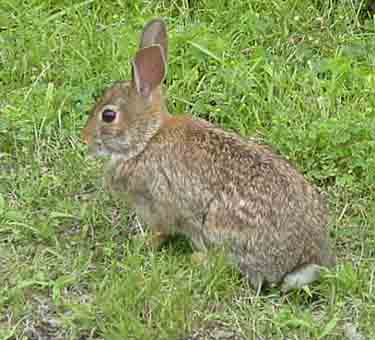|
|
Rabbit should be cleaned in the field immediately after killing. When cleaning
rabbit, be sure to wear rubber gloves to prevent the possibility of catching
rabbit fever from a diseased animal (Tularemia). Thorough cooking will destroy
the bacteria responsible for this disease.
 Skin the animal. Then clean out all blood and blood clots under running
water. All varieties of rabbits have scent glands that are small, waxy-looking
kernels under the forelegs and on both sides of the spine, in the small of the
back and between the shoulders. These should always be removed, taking care not
to cut into them. After the rabbit is skinned, very little fat remains and it is
not objectionable in flavor or odor. Cut rabbits into quarters. Dry the pieces
and keep cool on the trip home. The animal may be refrigerated and used within
three days or wrapped and frozen.
Rabbit is usually young, tender, and mild in flavor and may be cooked by
either dry or moist heat. Dry heat must be accompanied by larding, basting, or
the placing of strips of fat over the meat.
Rabbits may be cooked by any good recipe for chicken, but because there is so
little fat on the meat, additional fat will be required for browning or basting
or to add to the gravy or sauce served with the rabbit.
For roasted rabbit, rub surfaces with onion, garlic, and lemon. Stuff if
desired. Place on a greased rack in a shallow pan. Brush generously with melted
butter or margarine and cover loosely with foil. Roast at 325 degrees F. for 1
to 4 hours. Remove foil during last 1/2 hour to brown.
|
|
![]()